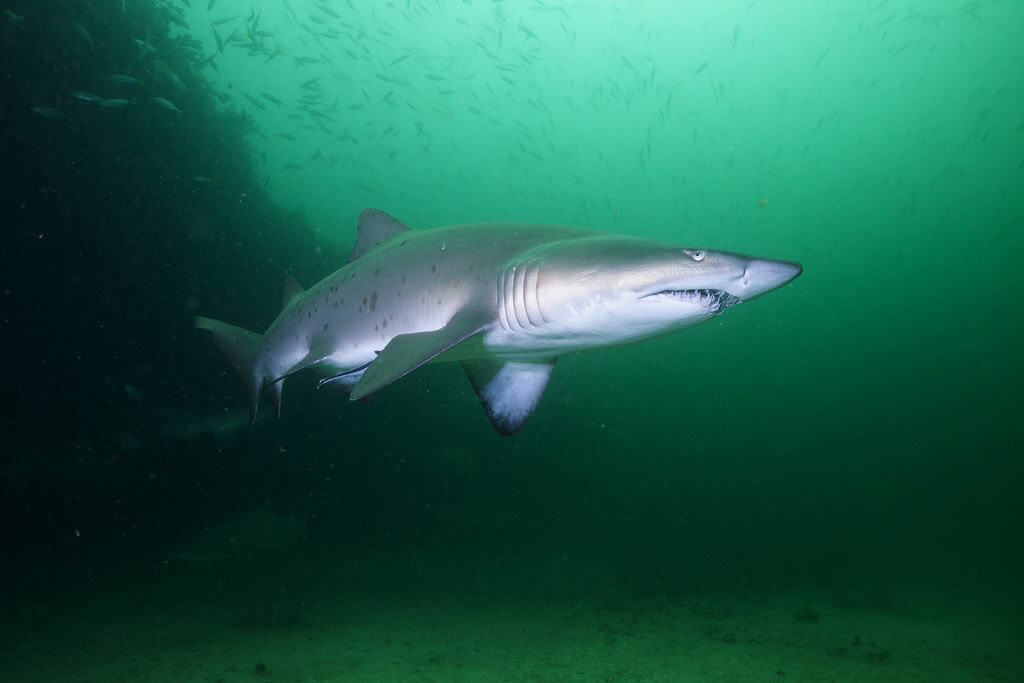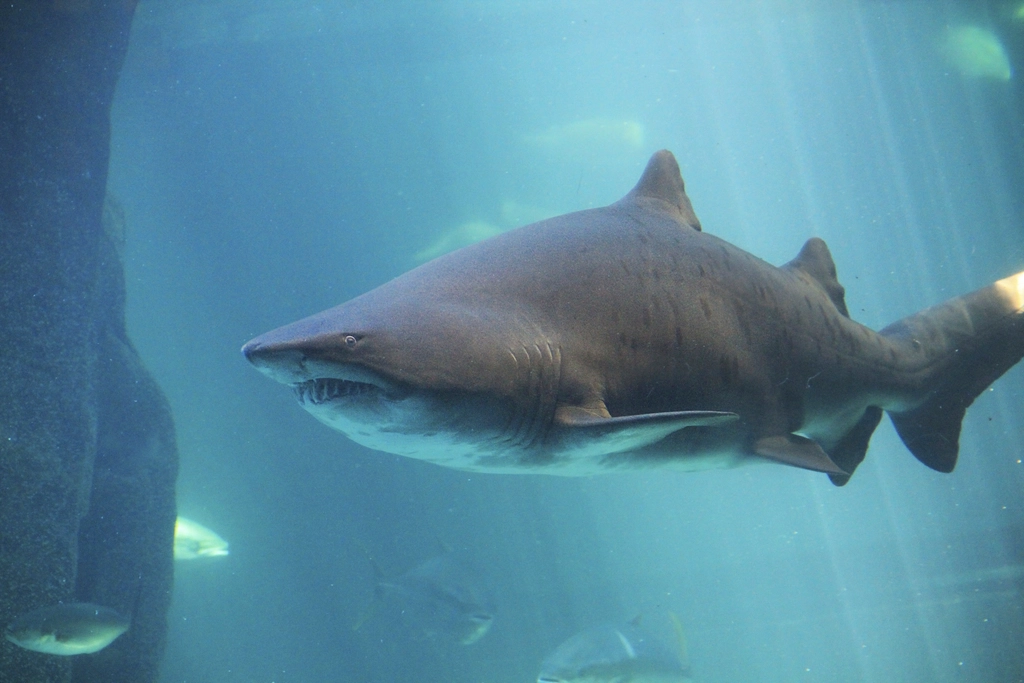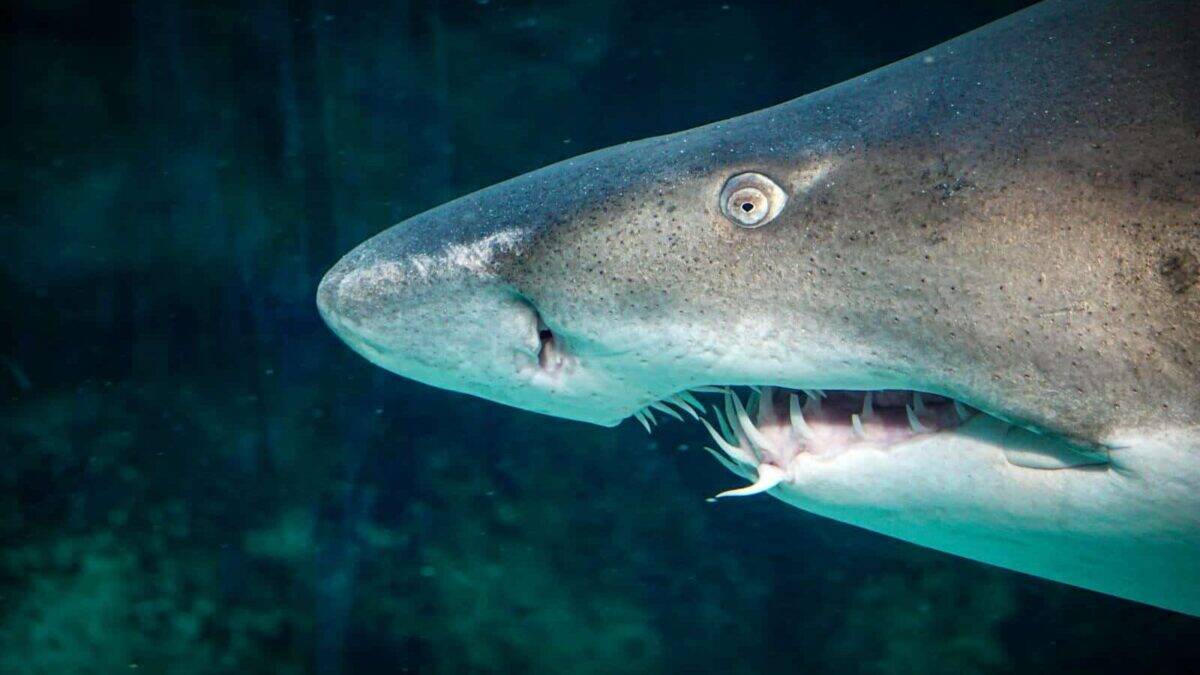Sharks, the ocean’s apex predators, have evolved to thrive in virtually every marine environment on our planet. From warm tropical shallows to the darkest depths of the ocean, these remarkable creatures have specialized over millions of years to occupy specific ecological niches. While popular culture often portrays sharks as deep-water monsters lurking in the abyss, the reality is far more diverse and fascinating. Many species actually prefer coastal waters and shallows, where food is abundant and breeding grounds are protected.
Understanding which sharks inhabit shallow versus deep waters isn’t merely academic knowledge—it’s practical information for beachgoers, divers, and anyone who interacts with marine environments. In this article, we’ll explore seven shark species that regularly frequent shallow waters—some perhaps surprisingly close to shore—and three species that remain primarily in the mysterious deep. Each has adapted remarkable specializations for their preferred depth zone, demonstrating the incredible evolutionary diversity of these ancient cartilaginous fish.
Blacktip Reef Shark The Shallow Reef Dweller

The blacktip reef shark (Carcharhinus melanopterus) is among the most recognizable shallow-water sharks, instantly identifiable by the distinctive black tips on its fins—particularly the dorsal and pectoral fins which often slice through the water’s surface. These medium-sized sharks typically reach 5-6 feet in length and are a common sight in tropical coral reef ecosystems throughout the Indo-Pacific region, Red Sea, and parts of the eastern Mediterranean. Unlike many shark species that roam widely, blacktip reef sharks establish relatively small home territories, rarely venturing beyond their familiar reef systems.
What makes blacktips quintessential shallow-water specialists is their preference for water less than 100 feet deep, with many individuals spending most of their time in waters less than 30 feet deep. They’re frequently spotted cruising just inches below the surface, particularly during high tide when they follow the water line to explore previously inaccessible areas of the reef. While generally cautious around humans, their preference for shallow, inshore habitats and territorial nature means they regularly encounter swimmers and snorkelers in popular tropical destinations.
Nurse Shark The Lazy Shallow Sleeper

The nurse shark (Ginglymostoma cirratum) defies many common shark stereotypes. These docile bottom-dwellers, reaching lengths of 7-9 feet, are renowned for their sedentary lifestyle and preference for resting on sandy seafloors in shallow waters. With a robust body, distinctive barbels (whisker-like sensory organs) near their mouths, and a suction-feeding mechanism, nurse sharks are perfectly adapted for their shallow-water lifestyle. They’re commonly found throughout the western Atlantic Ocean, Caribbean Sea, and eastern Pacific, typically in waters less than 75 feet deep.
During daylight hours, nurse sharks often congregate in large groups, sometimes stacking atop one another under ledges or in caves—a behavior rarely seen in other shark species. As night falls, they become more active, using their sensitive barbels to detect prey hiding in sand or crevices. Their strong suction-feeding ability allows them to extract hidden prey without needing to dig. Despite their sluggish appearance, nurse sharks are remarkably agile when motivated and can navigate extremely shallow water. There are frequent reports of nurse sharks in waters merely 3-4 feet deep, particularly in mangrove areas and shallow lagoons where they search for crustaceans and small fish.
Lemon Shark The Coastal Kindergarten Keeper

Lemon sharks (Negaprion brevirostris) get their name from their yellowish-brown coloration, which provides perfect camouflage in the sandy, shallow habitats they prefer. Growing to lengths of 8-10 feet, these substantial predators are commonly found in subtropical waters of the Atlantic and Pacific, particularly around the coasts of Florida, the Bahamas, and parts of the Caribbean. What makes lemon sharks especially interesting is their strong preference for nursery areas in extremely shallow waters, often just 2-3 feet deep, where newborn pups can develop protected from larger predators.
Research has revealed fascinating social behaviors in lemon sharks, including their tendency to form loose social groups and even what appears to be “friendships” with preferred individuals. Unlike many solitary shark species, lemons demonstrate recognition capabilities and preference for familiar companions. Their shallow habitat preference extends throughout their lifecycle, though adults may occasionally venture into slightly deeper waters up to 300 feet. Their consistent presence in shallow, coastal environments makes them one of the most thoroughly studied shark species, with long-term research programs tracking individuals for decades in locations like Bimini in the Bahamas, where generations of lemon sharks return to the same shallow nursery areas year after year.
Bonnethead Shark The Shallow Water Specialist

The bonnethead shark (Sphyrna tiburo) is the smallest member of the hammerhead family, rarely exceeding 4 feet in length. This diminutive shark sports a distinctive spade-shaped head that resembles a bonnet—hence its common name. Unlike their larger hammerhead relatives that may venture into deeper waters, bonnetheads are committed shallow-water specialists, rarely found deeper than 80 feet. They’re extremely common along the coastlines of the Americas, from New England to Brazil in the Atlantic and southern California to Ecuador in the Pacific, making them one of the most frequently encountered sharks in many inshore areas.
What makes bonnetheads particularly fascinating is their omnivorous diet—they’re one of the few sharks known to intentionally consume plant material, with seagrass comprising up to 62% of their diet in some populations. This dietary flexibility allows them to thrive in extremely shallow estuaries, seagrass beds, and mangrove areas. Their small size and specialized jaw structure enable them to crush hard-shelled prey like crabs and mollusks found in these shallow environments. Bonnetheads are known to form large schools, sometimes numbering in the hundreds, that migrate seasonally along coastlines following warm water temperatures. Their abundance in shallow waters makes them important subjects for conservation efforts, as they frequently encounter human activities including recreational fishing and coastal development.
Bull Shark The Freshwater-Tolerant Shallow Hunter

The bull shark (Carcharhinus leucas) stands alone among shark species in its remarkable ability to tolerate both saltwater and freshwater environments for extended periods. Growing to impressive lengths of 7-11.5 feet and weighing up to 500 pounds, these powerful predators are notorious for their aggressive disposition and preference for shallow, murky waters where visibility is limited. Their exceptional osmoregulatory abilities allow them to venture far upstream into rivers—they’ve been documented over 2,000 miles up the Amazon River and have established populations in Nicaragua’s Lake Nicaragua and Australia’s Lake Jamieson, making them true freshwater and shallow-water specialists.
Bull sharks possess the highest testosterone levels of any shark species, which contributes to their boldly aggressive nature. Their stocky build, broad snout, and powerful bite force make them formidable hunters in shallow coastal zones. They frequently hunt in water less than 100 feet deep, often much shallower, targeting prey near river mouths, estuaries, and harbor areas. This preference for shallow, often turbid waters frequented by humans contributes to their reputation as one of the three shark species most likely to be involved in unprovoked attacks on humans (alongside great whites and tigers). Their ability to thrive in these high-traffic shallow zones makes them a species of particular interest for both research and management efforts focused on reducing human-shark conflicts.
Tiger Shark The Shallow Garbage Disposal

The tiger shark (Galeocerdo cuvier) earns its name from the distinctive dark stripes that adorn juveniles (though these often fade as the shark matures). Growing to massive proportions—up to 14 feet long and weighing over 1,400 pounds—tiger sharks are among the largest predatory fish that regularly patrol shallow waters. While they do occasionally venture into deeper realms, they conduct much of their hunting in coastal environments, coral reefs, and harbor entrances, often in waters less than 150 feet deep. Their global distribution throughout tropical and subtropical waters puts them in frequent contact with human activity centers, particularly in places like Hawaii, the Caribbean, and Australia.
What truly distinguishes tiger sharks is their remarkably indiscriminate diet—they’re often called the “garbage cans of the sea” due to their willingness to consume almost anything, from conventional prey like fish, seals, and turtles to more unusual items including license plates, tires, and other human debris. This dietary flexibility makes shallow coastal areas particularly attractive hunting grounds, as they contain abundant natural prey alongside human-introduced items. Tiger sharks are known to patrol very shallow waters, particularly at night, sometimes venturing into water barely deep enough to cover their bodies when pursuing prey like sea turtles. Their regular presence in shallow recreational waters, combined with their large size and opportunistic feeding habits, makes them responsible for a significant percentage of shark attacks worldwide, second only to great white sharks.
Whale Shark The Gentle Shallow Giant

The whale shark (Rhincodon typus) stands as the largest fish on Earth, reaching lengths of up to 40 feet and weights exceeding 20 tons. Despite their massive size, these gentle filter-feeders spend considerable time in surprisingly shallow waters. While they do undertake deep dives (recorded to depths exceeding 1,900 meters), much of their feeding activity occurs near the surface in coastal areas. Their distinctive spotted pattern—unique to each individual like a fingerprint—makes them easily recognizable as they cruise slowly through warm waters worldwide, filtering plankton, small fish, and crustaceans through their gigantic mouths.
Whale sharks are known for their predictable aggregations in shallow coastal waters coinciding with seasonal food abundances. In locations like Ningaloo Reef in Australia, the Yucatán Peninsula in Mexico, and the Philippines, these enormous fish gather in shallow feeding grounds where plankton blooms occur, sometimes in waters as shallow as 15-30 feet. Their preference for warm surface waters makes them one of the few shark species actively sought out by ecotourists for swimming encounters. Despite their immense size, whale sharks pose virtually no threat to humans, lacking both the teeth and predatory instincts of their carnivorous relatives. Their regular presence in shallow waters, however, makes them vulnerable to vessel strikes, fishing activities, and other human impacts, contributing to their status as an endangered species requiring international conservation efforts.
Goblin Shark The Deep-Sea Alien

The goblin shark (Mitsukurina owstoni) represents one of the most bizarre and specialized deep-water sharks on the planet. With its elongated, flattened snout and protrusible jaws that can rapidly extend forward to capture prey, this living fossil has remained largely unchanged for millions of years. Sporting a distinctive pink-gray coloration due to blood vessels visible through its semi-transparent skin (an adaptation to deep-water living where pigmentation offers little benefit), goblin sharks typically measure 10-13 feet in length. Unlike the shallow-water specialists previously discussed, goblin sharks inhabit extreme depths, typically between 890 and 3,150 feet below the surface, though they’ve been recorded at depths exceeding 4,300 feet.
These elusive creatures remain one of the least studied shark species due to their deep-water habitat. Most scientific knowledge comes from accidental captures in deep-sea fishing operations rather than directed research. Their soft, flabby bodies and weak musculature suggest they’re slow, ambush predators rather than active hunters, lying in wait for prey to approach before dramatically projecting their jaws forward—sometimes up to 10% of their body length—to snatch passing fish. This specialized feeding mechanism is perfectly adapted for conserving energy in the resource-scarce deep ocean environment. Goblin sharks represent true deep-water specialists that would be physiologically incapable of surviving in shallow waters, with pressure differences likely causing severe damage to their bodies if they ventured toward the surface.
Frilled Shark The Deep-Sea Serpent

The frilled shark (Chlamydoselachus anguineus) resembles a creature from prehistoric times—which is appropriate given that this species has remained virtually unchanged for 80 million years, earning it the nickname “living fossil.” With an elongated, eel-like body that can reach lengths of 6.5 feet, ruffled gill slits that give it its name, and rows of trident-shaped teeth, the frilled shark bears little resemblance to what most people imagine when they think of sharks. This deep-water specialist typically inhabits depths between 390 and 4,200 feet, though most specimens are encountered between 1,500 and 3,300 feet below the surface.
The frilled shark’s unusual body shape represents a perfect adaptation to its deep-water environment. Its flexible jaw and over 300 needle-like teeth arranged in 25 rows allow it to strike rapidly and secure slippery prey like squid and fish that might otherwise escape. Unlike most sharks that must swim continuously to breathe, the frilled shark can pump water over its gills, allowing it to hover motionlessly as it waits for prey—a significant energy-saving adaptation in the food-scarce deep ocean. Scientists believe the frilled shark may use its dark coloration and bioluminescent capability to lure curious prey within striking distance. The extreme pressure and cold temperatures of their deep-water habitat create physiological barriers that prevent these sharks from venturing into shallow waters, making them true denizens of the deep that rarely interact with human activities.
Portuguese Dogfish The Deep-Water Specialist

The Portuguese dogfish (Centroscymnus coelolepis) exemplifies the specialized adaptations required for life in the ocean’s darkest depths. This relatively small shark, typically measuring 3-4 feet in length, inhabits what scientists call the bathyal and abyssal zones of the ocean, living at astonishing depths between 1,500 and 12,000 feet. What makes this species particularly remarkable is that it has the deepest confirmed depth range of any shark, with specimens documented at depths exceeding two miles beneath the ocean surface. Their dark brown to black coloration, large eyes adapted for detecting minimal light, and highly developed sensory systems allow them to navigate and hunt in an environment of perpetual darkness.
Portuguese dogfish have evolved specialized physiological adaptations to survive the crushing pressures and near-freezing temperatures of the deep ocean. Their liver contains high concentrations of squalene, a low-density compound that provides neutral buoyancy without the need for a swim bladder. Additionally, they possess specialized cells that produce natural antifreeze compounds, preventing their blood from crystallizing in the cold depths. Unlike shallow-water sharks that may feed daily, Portuguese dogfish have extremely slow metabolisms and can likely go weeks or months between meals, an essential adaptation to the food-scarce deep environment. Reproduction occurs at extreme depths, with females giving birth to 8-12 live young after an estimated gestation period of two years—one of the longest pregnancies in the shark world. These remarkable adaptations make the Portuguese dogfish a true specialist that could never survive in shallow waters.
Conclusion: The Remarkable Depth Diversity of Sharks

The striking contrast between shallow-loving shark species and their deep-water relatives highlights the remarkable evolutionary adaptability of these ancient predators. From the blacktip reef sharks cruising coral shallows in mere feet of water to Portuguese dogfish navigating crushing depths two miles below the surface, sharks have conquered virtually every aquatic niche through millions of years of specialization. This depth diversity isn’t merely an interesting biological footnote—it has profound implications for both human interactions with sharks and conservation efforts aimed at protecting these vital marine predators.
Understanding which species frequent shallow waters helps beach managers implement appropriate safety measures while allowing for more informed recreational choices by swimmers and divers. Similarly, recognizing the unique vulnerabilities of deep-water specialists assists in developing regulations for emerging deep-sea industries like mining and oil exploration. As ocean environments face unprecedented challenges from climate change, pollution, and fishing pressure, the specialized nature of shark species at different depths means that conservation approaches must be equally specialized.
Perhaps most importantly, appreciating the distinct adaptations sharks have evolved for different depth zones reveals the incredible biodiversity that remains hidden beneath the ocean’s surface. While shallow-water species like tiger sharks and bull sharks often dominate public perception and media coverage, the mysterious deep-dwellers represent equally important components
- 11 Mistakes First Time Chicken Owners Make - August 17, 2025
- 12 Times Prehistoric Creatures Were Found Alive - August 17, 2025
- 7 Shark Species That Love Shallows And 3 That Stick to the Deep - August 17, 2025

